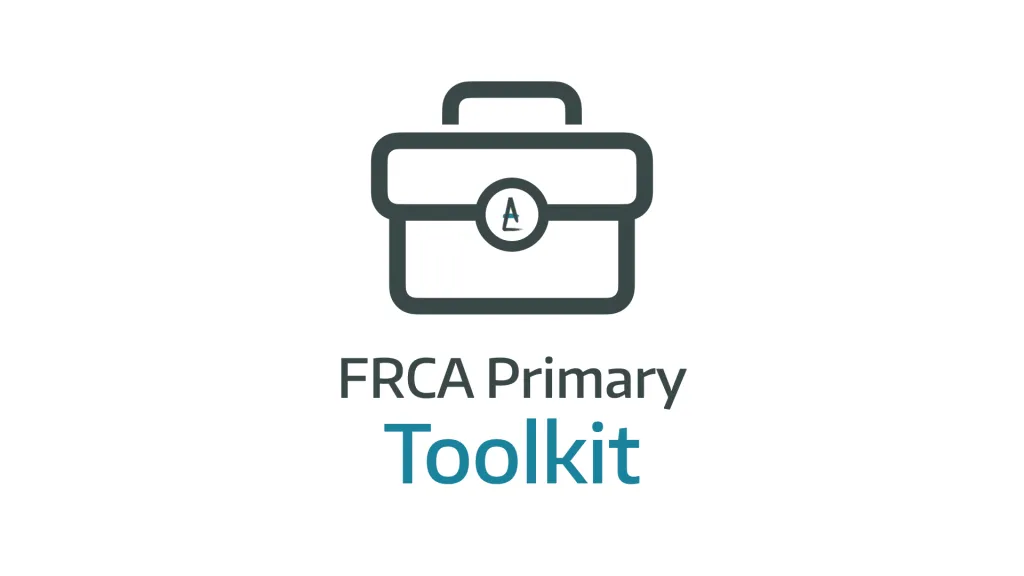Cardiopulmonary Exercise Testing

Take home messages
- CPET is a reliable, repeatable, objective measure of cardiopulmonary function
- An anaerobic threshold below 11ml O2/kg/min is associated with poor postoperative outcomes
Podcast episode
How does this make you feel?
Read the following bullet points and then consider how you'd feel about anaesthetising that person.
- "I swim three times a week and walk my dog twice a day."
- "I'm not as fit as I used to be, but I walk up the hill to the shops every morning."
- "I can manage a flight of stairs but need to pause to catch my breath at the top."
- "I live in a bungalow and feel short of breath walking from the sofa to the fridge."
Hopefully the first one made you feel positively about your job, and as you progressed down the list you starting wondering who you should call before going anywhere near a syringe.
If so, then congratulations, you're already doing cardiopulmonary exercise testing in your head.
Give that hunch a number
We know that patients with heart or lung disease carry a higher risk profile going into major surgery, but it would be nice to know just how much higher it really is.
This is the point of cardiopulmonary exercise testing.
The idea is that CPET is a safe and repeatable, non-invasive way of objectively assessing a whole bunch of useful information about a patient's cardiovascular and respiratory systems.
We love echocardiograms, and lung function tests, however these are invariably performed at rest, and give little-to-no idea of how well the patient's body can cope with any sort of exertion.
They don't necessarily tell us how the patient's body is going to cope when thrown into the arena of surgical stress, cardiodepressant anaesthetic agents and all the other homeostatic insults that occur during an operation.
CPET, on the other hand, assesses the patient's physiological ability to respond to the stress and metabolic demand of major surgery.
Oxygen extraction refers to how efficiently the tissues can pluck oxygen from the blood, and usually you sit around 25% at rest. The more oxygen you can extract from the blood, the less hard the cardiovascular system has to work to deliver more blood to the tissues.
- During exercise, this extraction can reach the giddy heights of 75%
- But after surgery, it's only 30%
This means the remaining demand has to be met by increasing cardiac output - meaning even more of a cardiovascular strain after an operation.
Metabolic equivalent of Task
- This is a ratio scale comparing different levels of exertion in terms of how much oxygen is consumed per minute, per kilo of body weight
- One metabolic equivalent is the oxygen consumption of a resting, fasted adult
- It is around 3.5ml/kg/minute
- If you want to undergo major surgery, you should be able to perform at least 4 METs
- This is approximately equal to climbing a flight of stairs
Beware the 'can you manage a flight of stairs?' question - patients often overestimate their own ability, especially those that live in bungalows who haven't had to try climbing stairs for several years.
Oh and one woman once said, 'of course darling... I have a stairlift'.
Different types of testing
You can objectively assess cardiopulmonary function in a number of ways, but they're essentially all doing the same thing - make a person exercise, and then see how well they fare.
What happens during exercise?
- Muscles use more ATP
- Mitochondria use more oxygen to produce ATP
- Oxygen extraction from the blood increases
- The cardiovascular system increases cardiac output and reduces systemic vascular resistance to meet demand
- This is helped by muscles (such as the calves) pumping venous blood back to the right side of the heart
- Minute ventilation increases to blow off extra CO2 and supply more oxygen
- As workload increases, the anaerobic threshold is reached where the ability to supply ATP through aerobic metabolism is exceeded
- This results in lactic acid production and a sudden jump in CO2 release as bicarbonate is used to buffer the acid
Six minute walk test
Does what it says on the tin.
If your aortic stenosis means you can't walk more than 300 metres during a six minute walk test, then you have a worse prognosis after aortic valve replacement.
Incremental shuttle walk test
The subject walks back and forth between two cones that are nine metres apart. They have to gradually increase their speed to reach the next cone on time, and the test ends when they fail to reach the cone in the allocated time frame.
This relies a little more on motivation than CPET or the six minute walk.
How CPET is done
You have a stationary bicycle ergometer, and a trolley with all sorts of measury stuff on it.
What happens during CPET
- Assess ECG, NIBP, sats and spirometry for around three minutes to establish a baseline
- Start pedalling at around 60 rpm against minimal resistance
- Gradually increase resistance at a set rate over the next three minutes or so
- Keep going until the person taps out*
*Or is told to tap out by a worried technician who's now looking at a new arrhythmia or ST elevation.
What we measure
- Power
- Oxygen consumption (VO2)
- CO2 production (VCO2)
- Respiratory exchange ratio
- Anaerobic threshold
- Heart rate
- ECG and ST analysis
- NIBP
- Oxygen pulse (VO2/HR)
- Minute ventilation
- Tidal volume
- Respiratory rate
What the numbers mean
In short - the more exercise you're able to do without dying, having an MI or passing out, the better your chances of surviving major surgery.
VO2 max
This is a measure of oxidative phosphorylation, and therefore aerobic respiration. The more oxygen you're able to consume per kilo of body weight per minute, the fitter you are.
Anaerobic Threshold
The anaerobic threshold is the VO2 at which any further increase in work will result in anaerobic respiration occuring.
The higher the rate of oxygen consumption before you start producing lactate through anaerobic respiration, the fitter you are.
Oxygen Debt
Much as one may need to borrow money at an extortionate interest rate in order to buy a house, a car, or enter a post-graduate medical examination, so does the body's own lactate loan shark offer borrowed energy to the muscle cells of the body in the form of oxygen debt.
- The body can't meet the demands put upon it through oxidative respiration
- It uses anaerobic respiration to foot the immediate bill, and deals with the consequences later
- This ends up consuming more oxygen overall than if the body were able to complete the initial task using aerobic respiration
The is because the cells have to regenerate ATP and phosphocreatine, replace the lost glycogen stores from the muscles and liver, and put all those pesky electrolytes back on the correct side of their concentration gradients.
And that's all before we start thinking about managing the repair of damaged muscle tissue, fixing the myoglobin oxygen stores and getting rid of all the excess heat that was generated during the fight or flight scenario that you've hopefully just survived.
The 9 panel plot
Once we've finished torturing our patient with a stationary bicycle and harvested all sorts of lovely data, we can plot it on a variety of graphs, and the 9 panel plot is the generally accepted method of doing so.
You do not need to be able to comprehensively examine and interpret a 9 panel CPET plot for the anaesthetic exams.

It is helpful, however, to have a vague idea about what you're looking for, and what it might look like.
A summary of the components
- Panels numbered from top left to bottom right
- Panels 2, 3 and 5 represent the cardiovascular system
- Panels 1, 4 and 7 represent ventilation
- Panels 6, 8 and 9 represent ventilation-perfusion relationships
A good approach is to ask the following questions:
Is the test of maximal effort?
- This tells you whether the values for AT and peak VO2 will be accurate
- If the patient tapped out because their knee hurt, then your readings won't reflect their absolute maximal oxygen consumption
What is the peak VO2 in panel 3?
- A peak VO2 of less than 15 ml/kg/min means a higher risk of perioperative complications
Is the relationship between VO2 and work normal?
- Oxygen consumption should increase at 10 ml/min/Watt
What is the anaerobic threshold?
- This is the point at which there is a sudden increase in CO2 production, as bicarbonate is used to buffer lactic acid production
- Usually seen in panels 5 and 6
- In up to 10% of tests you cannot determine the anaerobic threshold accurately
What is the VO2 at the anaerobic threshold?
- Usually this will be calculated by a computer, rather than you getting rulers and pencils out
- If the anaerobic threshold occurs below 11 ml/kg/min then there is a much higher risk of perioperative complications
Did the heart rate demonstrate a normal response?
- Generally the heart rate should increase linearly with work
- There is then a prompt decrease in heart rate after stopping the exercise
- Beta-blockers and cardiovascular disease can affect how well this physiological response occurs
How does O2 pulse change with exercise?
- O2 pulse = VO2/Heart rate
- It's an approximation of stroke volume
- It should increase as exercise begins and build to a plateau
Are there any respiratory issues?
- Minute ventilation should increase linearly with work, up until the anaerobic threshold
- After this there is a much greater increase in ventilation as the extra CO2 is removed
- In healthy individuals, ventilation is not the limiting factor for exercise, but in those with chronic lung disease, it can affect the results
Were there any ECG changes?
- This can be indicative of ischaemia or arrhythmia
For example:
- An elderly patient with ischaemic heart disease and an aortic aneurysm may finish the exercise early due to fatigue and chest pain, with ST changes demonstrated on the ECG
- His maximum VO2 sat at around 15 ml/kg/min
- His anaerobic threshold was 12 ml/kg/min
- He had no ventilatory limitation
This patient is clearly not the fittest chap, and hence may be a better candidate for endovascular repair rather than major open surgery.
The best video on CPET testing
It's enormous but exceptionally good.
Free CRQ from FRCA revision

Useful Tweets and Resources
#Anaesthesia2019
— Royal College of Anaesthetists (@RCoANews) May 21, 2019
How to CPET
Period of getting used to the bike
Vo2 goes up a little (video explains why!) pic.twitter.com/FQFM9AAvfh
References and Further Reading


Primary FRCA Toolkit
Members receive 60% discount off the FRCA Primary Toolkit. If you have previously purchased a toolkit at full price, please email anaestheasier@gmail.com for a retrospective discount.

Discount is applied as 6 months free membership - please don't hesitate to email Anaestheasier@gmail.com if you have any questions!
Just a quick reminder that all information posted on Anaestheasier.com is for educational purposes only, and it does not constitute medical or clinical advice.
